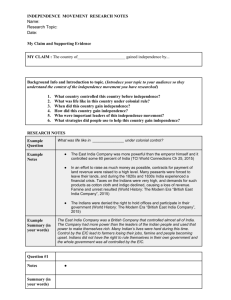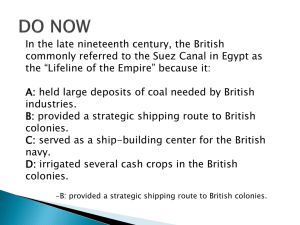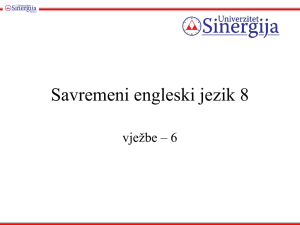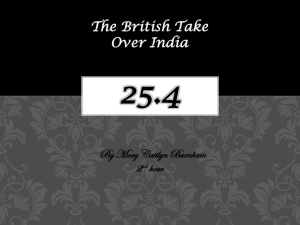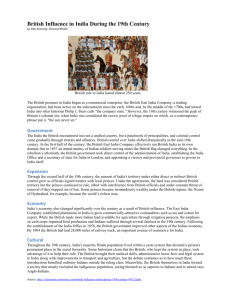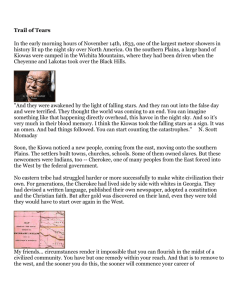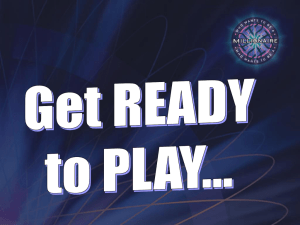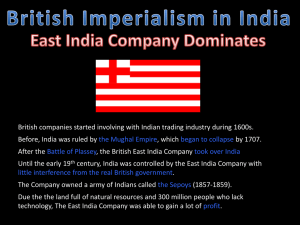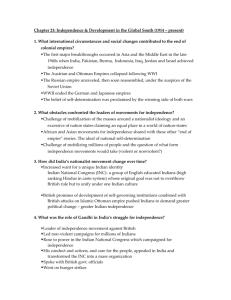European “Expansion” Texts - School of Historical, Philosophical
advertisement
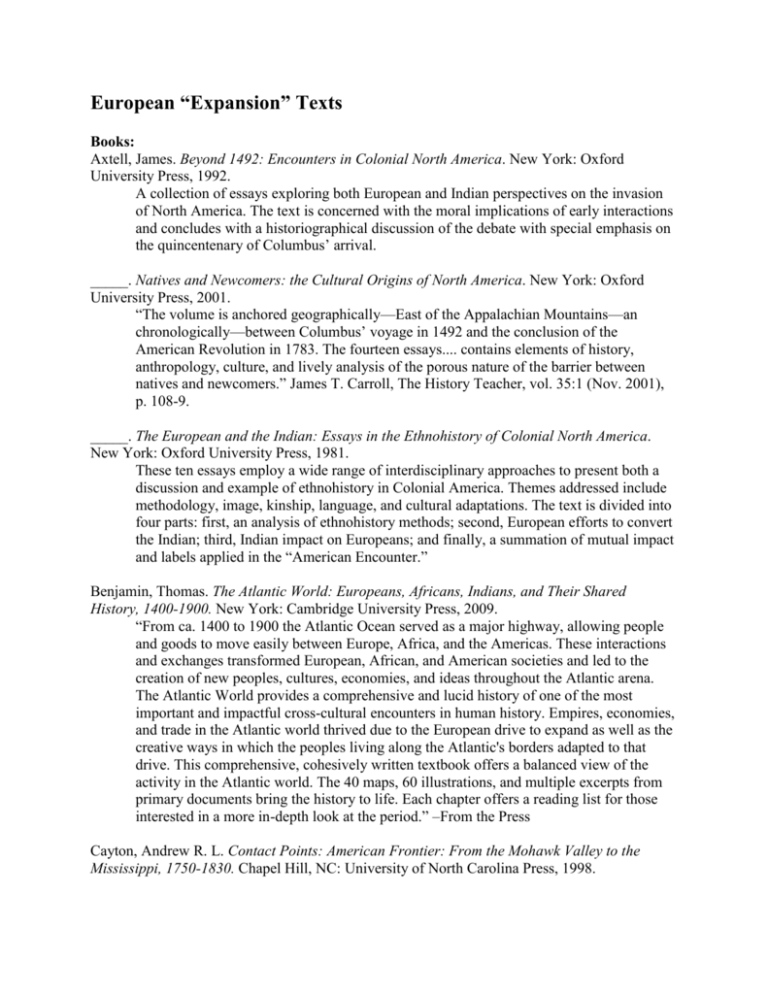
European “Expansion” Texts Books: Axtell, James. Beyond 1492: Encounters in Colonial North America. New York: Oxford University Press, 1992. A collection of essays exploring both European and Indian perspectives on the invasion of North America. The text is concerned with the moral implications of early interactions and concludes with a historiographical discussion of the debate with special emphasis on the quincentenary of Columbus’ arrival. _____. Natives and Newcomers: the Cultural Origins of North America. New York: Oxford University Press, 2001. “The volume is anchored geographically—East of the Appalachian Mountains—an chronologically—between Columbus’ voyage in 1492 and the conclusion of the American Revolution in 1783. The fourteen essays.... contains elements of history, anthropology, culture, and lively analysis of the porous nature of the barrier between natives and newcomers.” James T. Carroll, The History Teacher, vol. 35:1 (Nov. 2001), p. 108-9. _____. The European and the Indian: Essays in the Ethnohistory of Colonial North America. New York: Oxford University Press, 1981. These ten essays employ a wide range of interdisciplinary approaches to present both a discussion and example of ethnohistory in Colonial America. Themes addressed include methodology, image, kinship, language, and cultural adaptations. The text is divided into four parts: first, an analysis of ethnohistory methods; second, European efforts to convert the Indian; third, Indian impact on Europeans; and finally, a summation of mutual impact and labels applied in the “American Encounter.” Benjamin, Thomas. The Atlantic World: Europeans, Africans, Indians, and Their Shared History, 1400-1900. New York: Cambridge University Press, 2009. “From ca. 1400 to 1900 the Atlantic Ocean served as a major highway, allowing people and goods to move easily between Europe, Africa, and the Americas. These interactions and exchanges transformed European, African, and American societies and led to the creation of new peoples, cultures, economies, and ideas throughout the Atlantic arena. The Atlantic World provides a comprehensive and lucid history of one of the most important and impactful cross-cultural encounters in human history. Empires, economies, and trade in the Atlantic world thrived due to the European drive to expand as well as the creative ways in which the peoples living along the Atlantic's borders adapted to that drive. This comprehensive, cohesively written textbook offers a balanced view of the activity in the Atlantic world. The 40 maps, 60 illustrations, and multiple excerpts from primary documents bring the history to life. Each chapter offers a reading list for those interested in a more in-depth look at the period.” –From the Press Cayton, Andrew R. L. Contact Points: American Frontier: From the Mohawk Valley to the Mississippi, 1750-1830. Chapel Hill, NC: University of North Carolina Press, 1998. “The eleven essays in this volume probe multicultural interactions between Indians, Europeans, and Africans in eastern North America's frontier zones from the late colonial era to the end of the early republic. Focusing on contact points between these groups, they construct frontiers as creative arenas that produced new forms of social and political organization. Contributors to the volume offer fresh perspectives on a succession of frontier encounters from the era of the Seven Years' War in Pennsylvania, New York, and South Carolina to the Revolutionary period in the Ohio Valley to the Mississippi basin in the early national era. Drawing on ethnography, cultural and literary criticism, border studies, gender theory, and African American studies, they open new ways of looking at intercultural contact in creating American identities. Collectively, the essays in Contact Points challenge ideas of either acculturation or conquest, highlighting instead the complexity of various frontiers while demonstrating their formative influence in American history.” –From the Press Churchill, Ward. A Little Matter of Genocide: Holocaust and Denial in the Americas, 1492 to the Present. San Francisco: City Lights Books, 1997. Argues that Native Americans were clearly the victims of a physical and cultural genocide that continues to this day. The text begins with a discussion of denial and continues with a three chapter summary of Indian history from Columbus to the present. Churchill comments on U.S. support for foreign genocides against Native peoples throughout Latin America. The final chapters examine Indian nations as an “internal colony” and discuss why the U.S. refused to ratify the Genocide Convention. Crosby, Alfred W. Jr. The Columbian Exchange: Biological and Cultural Consequences of 1492. Anniversary ed. Westport, CT: Praeger, 2003. “Thirty years ago, Alfred Crosby published a small work that illuminated a simple point, that the most important changes brought on by the voyages of Columbus were not social or political, but biological in nature. The book told the story of how 1492 sparked the movement of organisms, both large and small, in both directions across the Atlantic. This Columbian exchange, between the Old World and the New, changed the history of our planet drastically and forever…The book The Columbian Exchange changed the field of history drastically and forever as well. It has become one of the foundational works in the burgeoning field of environmental history, and it remains one of the canonical texts for the study of world history. This 30th anniversary edition of The Columbian Exchange includes a new preface from the author, reflecting on the book and its creation, and a new foreword by J. R. McNeill that demonstrates how Crosby established a brand new perspective for understanding ecological and social events. As the foreword indicates, The Columbian Exchange remains a vital book, a small work that contains within the inspiration for future examinations into what happens when two peoples, separated by time and space, finally meet.” – From the Press Given, Brian J. A Most Pernicious Thing: Gun Trading and Native Warfare in the Early Contact Period. Ottawa: Carleton University Press, 1994. This text discusses the myth of European military technological superiority and argues that Native weapons better served their owners than the European matchlock muskets of the colonial era. Jennings, Francis. The Invasion of America: Indians, Colonialism, and the Cant of Conquest. Chapel Hill: Published for the Institute of Early American History and Culture by University of North Carolina Press, 1975. The “thrust of research is on seventeenth century New England Puritan colonials,” and it “argues convincingly that Indians as well as colonials had humanity as well as savagery. In the second part of the book, Jennings finds what most of us have suspected, that there is ‘no substantiation for the filiopietist portrayal of them in a semidivine state…’” Wilbur Jacobs, Ethnohistory, vol. 23:1 (Winter, 1976), p. 83. Kavanagh, Thomas W. Comanche Political History, 1706-1875: An Ethnohistorical Perspective Lincoln: University of Nebraska Press, 1996. “Kavanagh has gone through Spanish, Mexican, and United States archival materials and has culled from these records every reference to the Comanche people. Using this mass of information, he skillfully traces the history of the Comanche political structure from the first European mention in 1706 until their surrender at Fort Still in May 1875.” Willard Hughes Rollings, The Journal of American History, vol. 84:2 (Sep., 1997), p. 621. Lightfoot, Kent G, Indians, Missionaries, and Merchants: the Legacy of Colonial Encounters on the California Frontiers. Berkeley: University of California Press, 2005. “Lightfoot exemplifies the historical approach in anthropology by critically synthesizing documentary, oral, and archaeological data to examine late seventeenth and early eighteenth Century encounters involving Spanish and Russian colonies and the native peoples of coastal California.” Arthur A. Joyce, Journal of Colonialism and Colonial History, vol. 6:2 (Fall, 2005). Mancall, Peter C. and James Hart Merrell. American Encounters: Natives and Newcomers from European Contact to Indian Removal, 1500-1850. New York: Routledge, 2000. “Newly expanded, the second edition of American Encounters provides the most comprehensive, up-to-date collection of scholarship on the Native American experience from European contact through the Removal Era. Retaining the hallmark essays from the celebrated first edition, the second edition contains thirteen new essays, emphasizing the most recent, noteworthy areas of inquiry, including gender relations, slavery and captivity, and the effects of Christianity on the course of native history. With each essay prefaced by helpful headnotes that highlight key concepts and draw connections among the essays, plus an expansive 'Further Readings' section, the second edition of American Encounters is an indispensable volume for both professors and students of early American history.” –From the Press Merrell, James. The Indians New World: Catawbas and Their Neighbors from European Contact through the Era of Removal. Chapel Hill: Published for the Institute of Early American History and Culture, Williamsburg, Virginia, by the University of North Carolina Press, 1989. Uses archeology, anthropology, and folklore to trace the Carolina Piedmont tribe from the sixteenth century until mid nineteenth century focusing on the Indians’ adaptations as they interacted with disease, diplomats, missionaries, and traders. Morrison, Kenneth M. American Indian History: A Reader in Early Culture Contact, 1492-1760. Los Angeles: American Indian Studies Center, University of California, 1981. A collection of essays that focus on images, missions, trade, Indian-Indian relations, and culture changes. Over two dozen authors including James Axtell, James Ronda, and Gary Nash. Phillips, George Harwood. Bringing them Under Subjection: California's Tejón Indian Reservation and Beyond, 1852-1864. Lincoln: University of Nebraska Press, 2004. This is the third and final volume of Phillips’ study on the San Joaquin Valley. It examines “relocation, dislocation, and subjection” and how Indians “underwent cultural, economic, political, and demographic transformation of staggering proportions” (251). The text addresses cultural disruption from the gold rush, treaties, and Euro-American attempts to subjugate Indians independent of treaties. Richter, Daniel K. Facing East from Indian Country: a Native History of Early America. Cambridge, Mass: Harvard University Press, 2001. Traces the first three centuries of contact between Indians and Europeans emphasizing cultural adaptation and indigenous perspectives. Considerable attention is paid to three specific figures (Pocahontas, Kateri Tekakwitha, and Metacom) to demonstrate Native American’s preference for cooperation over conflict. Salisbury, Neal. Manitouand Providence: Indians, Europeans, and the Making of New England, 1500-1643. New York: Oxford University Press, 1982. This ethnohistory traces interactions between Indians and Europeans (French and English) in New England during the first half of the seventeenth century. After the initial chapter ("Families and Hunters") that relates to Algonquian culture before European contact, the remaining six chapters contrast Native Americans and Europeans from “Hunters and Traders” to “Losers and Winners.” Seth, Vanita. Europe’s Indians: Producing Racial Difference, 1500-1900. Durham, NC: Duke University Press, 2010. “Europe’s Indians forces a rethinking of key assumptions regarding difference— particularly racial difference—and its centrality to contemporary social and political theory. Tracing shifts in European representations of two different colonial spaces, the New World and India, from the late fifteenth century through the late nineteenth, Vanita Seth demonstrates that the classification of humans into racial categories or binaries of self–other is a product of modernity. Part historical, part philosophical, and part a history of science, her account exposes the epistemic conditions that enabled the thinking of difference at distinct historical junctures. Seth’s examination of Renaissance, Classical Age, and nineteenth-century representations of difference reveals radically diverging forms of knowing, reasoning, organizing thought, and authorizing truth. It encompasses stories of monsters, new worlds, and ancient lands; the theories of individual agency expounded by Hobbes, Locke, and Rousseau; and the physiological sciences of the nineteenth century. European knowledge, Seth argues, does not reflect a singular history of Reason, but rather multiple traditions of reasoning, of historically bounded and contingent forms of knowledge. Europe’s Indians shows that a history of colonialism and racism must also be an investigation into the historical production of subjectivity, agency, epistemology, and the body.” –From the Press Steele, Ian Kenneth. Warpaths: Invasions of North America. New York: Oxford University Press, 1994. Traces Native American and European territorial conflicts from Ponce de Leon’s 1513 defeat near modern day St. Augustine through the 1765 peace negotiations between Britain and the tribes of the Old Northwest. This text pays special attention to the transmission of technology and military strategy to disprove prior interpretations of indigenous military inferiority or European tactical rigidity. Thornton, Russell. American Indian Holocaust and Survival: A Population History Since 1492. Norman: University of Oklahoma Press, 1990. Examines demographic catastrophes, booms, and general trends in Indian population from before Columbus’ and through the 20th century growth (though Thornton concludes that increasing urbanization will ultimately stun recent Indian population growth). Thorton interprets a population decline before the arrival of Europeans and revises former estimates to draw his own new conclusions. Wolf, Eric R. Europe and the People Without History. Berkeley: University of California Press, 1982. This text discusses European interaction with the rest of the world throughout the modern era. The first of three main sections provides a background of the world and the West at 1400; the second traces European expansion and its impact on world during pre-industrial era (with particular focus on African slave trade and North American fur trade); and the third section ex pounds on Europe’s impact on the non-Western world during Europe’s capitalist and industrialized era. Most recent Compilation: Meaghan Heisinger (2011) Compiled by: Monica Butler Annotated by: Matthew Garrett
